Principle of the method
This technique is based on two key steps. First, a learning of the structure is established from an impulse excitation and a measurement of the response in one or more positions.
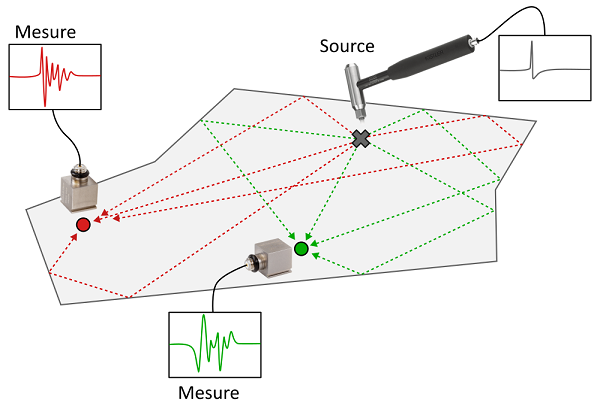
The second step is to re-send the measured signals back in time (reverse reading). The propagation of the waves being reciprocal, a focusing of the energy is observed at the initial source point.
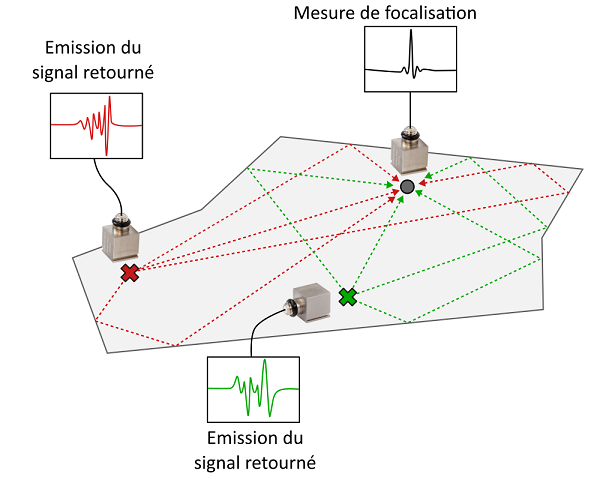
Source location by Butterfly Antenna (patent)
Traditional acoustic imaging techniques require expensive equipment, due to the large number of sensors needed for the measurement, and use in low-noise environments. The butterfly antenna developed by SONORHC overcomes these two aspects since it requires only two sensors and can be used in non-acoustically treated premises. A totally new aspect is the possibility to localize sources inside mechanisms, contrary to classical imaging which gives surface information.
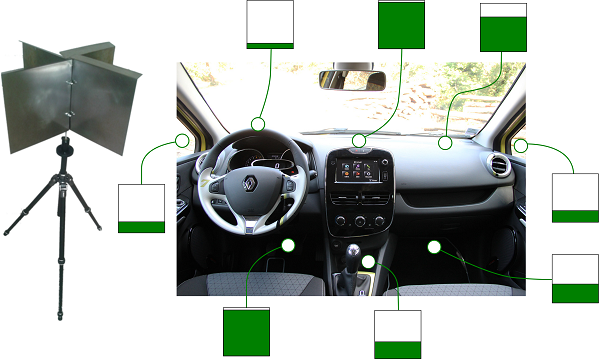
Following a preliminary training in a few points, it is possible to locate acoustic or vibratory sources. This type of method is used to identify vibro-acoustic couplings (cabin noise in cars for example) or preferred transmission paths.
This method is the subject of a patent
Structural monitoring and defect detection (patent)
A modification of the structure or the appearance of a defect induces a different wave propagation, which alters the quality of focusing to a greater or lesser extent. Various indicators can then be used to determine the presence of an imperfection, a change in the structure, etc.
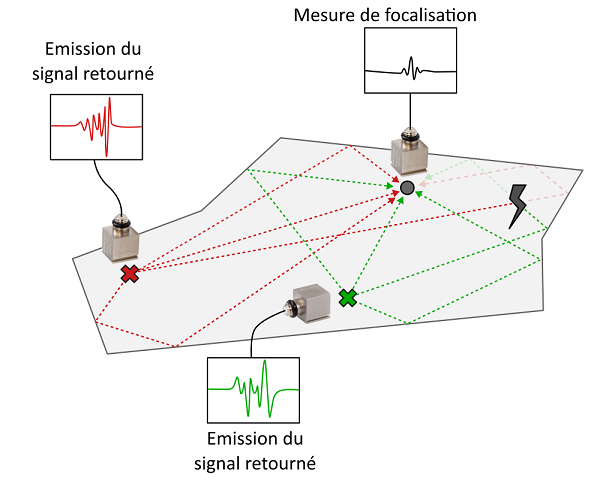
The major interest of time reversal is that this technique is based on image sources. An infinite number of propagation paths are therefore analyzed from a small number of sensors (2 to 5 transducers), which increases the capacity to detect a defect.
This method is the subject of a patent
Structural communication (patent)
In some particular cases of civil engineering or industry, the use of wired or WiFi networks is not possible. However, the transmission of information between different elements is often essential (remote control). To answer this problem, structural communication is interesting because it directly uses the framework as a propagation medium.
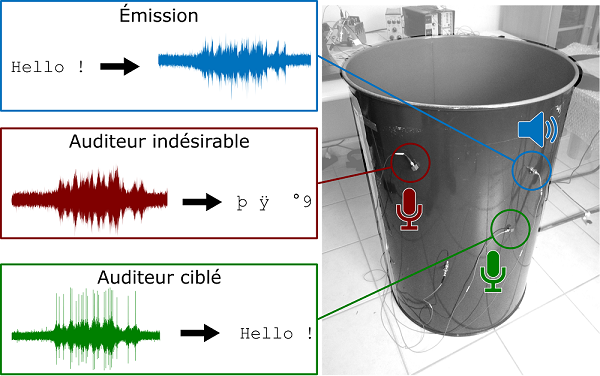
Moreover, this means of transmitting information can be stealthy thanks to the time-reversal method. Since the energy focus is local, the communication naturally becomes indescribable outside the targeted listening point (see illustration above).
This principle is also applicable in acoustics using a fluid propagation medium (air, water, etc.).
This method is the subject of a patent
